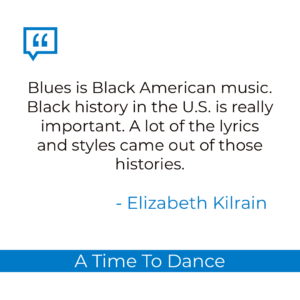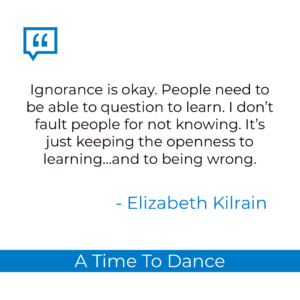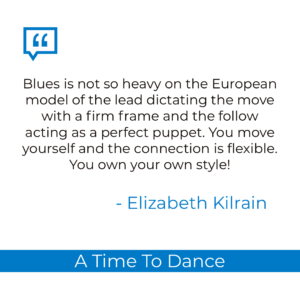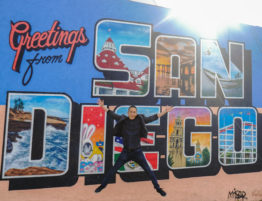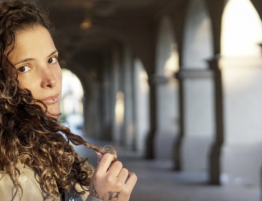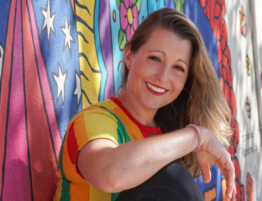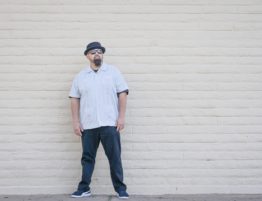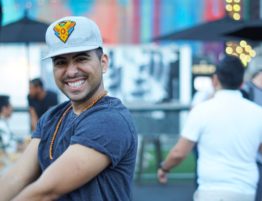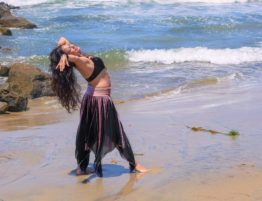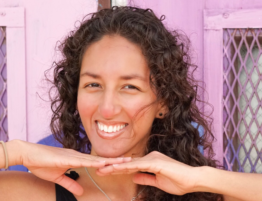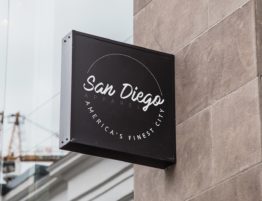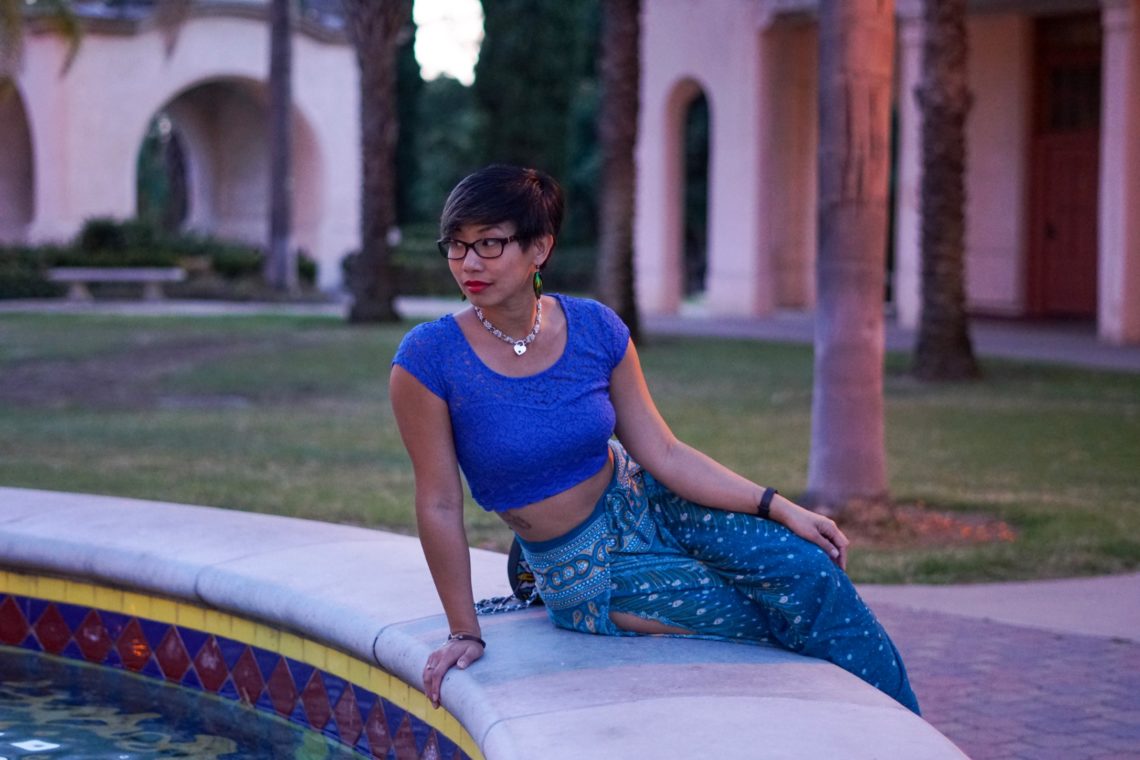
Elizabeth is the kind of person you want to listen to.
Not in a she’ll-tell-you-what-to-do-and-you’ll-do-it kind of way, but in a lean-in-and-really-think-about-it way. She’s always ready to bring something to the table and to drop some knowledge!
And that’s why we were so excited to chat with her about one of her areas of expertise – blues. Here’s what she she had to say:
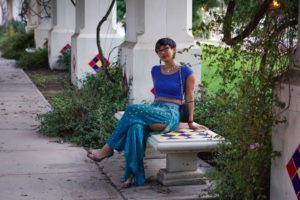
Q: How did you get into blues?
Elizabeth: As a musician, I’ve always been into music. Any genre of music that I like, eventually I find myself moving to it. With blues, I knew that I wanted to learn how to dance to this.
When I first moved to San Diego, I was looking for a community, and blues and jazz were areas I already liked. I went downtown to different jams, sometimes singing in them, and the musician friends I’d made introduced me to blues jams.
I was already a swing dancer at the time, so someone who knew I liked blues invited me check out the “blues room” at a swing dance, but none of the music they were playing was blues. People were wiggling around in the dark, and I was confused. Honestly, I was turned off by this dancing to start.
So I made my way online to find groups and forums to ask what was going on. Unbeknownst to me, Damon Stone, a very well-known historian and teacher in the community and now a dear friend of mine, thought I was trolling with my questions. He had just come off a couple of other online arguments along the lines of, “Blues is anything you want it to be, it’s not defined bla bla bla,” He basically told me that I should educate myself.
I got really mad. I was asking a legitimate question! He came back and apologized and explained to me that a lot of times people are just used to modern music or music with a heavy baseline and don’t know how to dance the stuff that is more subtle.
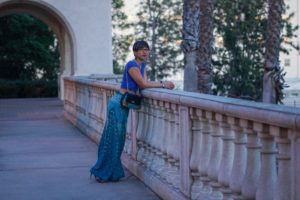
At that time there was still a wide gap between the music scene and the dance. In my travels, I found that communities wouldn’t necessarily call it blues dance. It was just so ingrained in the community that they simply called it dancing.
They did, though, have different names for the types of blues dancing – slow dancing, grinding, the mooche, the funky four corners, slow dragging, belly rubbing, etc. There’s so many regional styles of blues!
All of the lyrics, if you listen, will say things like, “we’re belly rubbing all night long.” That doesn’t just mean that we’re rubbing bellies; it’s the name of the dance.
So it was a mixture of that. I did a lot of travelling on my own and a lot of chatting with musicians that I’d been hanging out with and getting their stories. If you tell them people pay money to go to workshops, they’d be like “What?! To do the thing we do at house parties and in backyards and in jukejoints for free? You teach this stuff?”
There’s a bit of a disconnect for people who grew up with the culture versus everyone else. Just by asking and listening, though, I learned a lot. If I asked “How’d you learn that move?” someone would say, “Well, parents would have a house party and we’re not allowed to join in and they’d send us all to bed but we’d crawl to the stairs and look over the edge and try to memorize as much as possible before we got caught and go back to our bedroom and practice it.” Things like that. That was how I supplemented and fleshed out my education.
Q: What is the scene like? It seems like it would come from house parties, but then you also have people who have festivals.
Elizabeth: Over the last 10-15 years, things have come closer to reconciliation. People are becoming more aware that the history is central.
Blues is Black American music. Black history in the U.S. is really important. A lot of the lyrics and styles came out of those histories.
Because of that effort, you’ll see a lot more varieties of the blues dance. It used to be people would dance generically blues, as in they would have movements that look like they came from blues but you couldn’t really identify them. Now the scene hires musicians who are very steeped in the history and very invested in the culture.
Also, there’s a difference between musicians who play blues versus musicians who are blues musicians. They live and breathe blues. The scene being willing to hire people like that and offer Q&A panels for perspective has made a lot of difference.
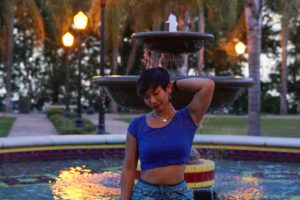
Q: So education is a huge aspect?
Elizabeth: A lot of education! Another thing I push for is for dancers to go out to live music. You can dance in studios all you want, but you’re never going to get that sense of where it comes from until you go and have that feeling of energy exchange between you and a live band.
The bands feel that way too! They’ll even tell you that they get energized from the dancers. There’s a musical back and forth and they feed off of each other and maybe a song that was originally two and a half minutes turns into seven minutes.. That’s usually the lightbulb moment – we’re sweaty, we’re hot, we understand why we dance small now because it’s so crowded!
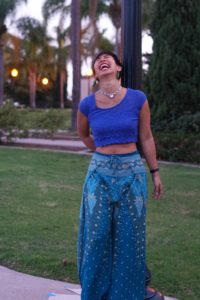
Q: Where can people go in San Diego to dance blues?
Elizabeth: Oh gosh, it’s all over the place! There are a lot of musicians in town who I adore. One of the easiest ways to find a general gig calendar is the Blues Lovers United of San Diego at blusd.org.
As for the usual places, as much as blues is in the name House of Blues, they very rarely play blues. Robin Hankel is a local legend guitarist who will play steel guitar. He has a folk and acoustic sound, but also has a band with a soul sound. He usually plays Tuesday nights in the restaurant area.
There’s a blues jam at Prohibition in downtown on Wednesday nights as well as at Proud Mary’s in Kearney Mesa. That’s inside the hotel.
Patrick’s is also downtown and they have Walter Gentry’s Chicken Jam.
Tomcat Courtney is another local legend. He’s from Texas and is 90 this year! He’s been playing forever. The best thing about his gigs is that he will tell you stories, but the stories actually connect the dots between songs. You realise he’s actually talking about the Dust Bowl, or the war, or T-Bone Walker. He plays Wednesday nights at the Cafe Bar Europa in PB. If you’re just looking for something that’s mellow, that’s a great one to go to with plenty of food, drinks, seating room, and dance space.
Fuzzy Rankins is pretty big. There’s a wealth of blues music all around town.
Q: It sounds like context is extremely important. What do you teach in your class at A Time To Dance?
Elizabeth: I’ve changed the way I teach over the years. I used to go about it the way swing is generally taught – a set of moves, you learn the steps, and you do a sort of routine. But I realized that I didn’t really like that.
People focus more on learning the moves, but they aren’t really dancing. It leaves out the improvisation and connection to the music and to a partner.
You just learn by doing. So the way I teach my class is by starting with some fundamentals – the posture and getting a beat going through your body. In blues a core element is a pulse, so we’ll practice a version of that. Then we do a few basics and drills until that becomes muscle memory.
Then we can add variation and build onto it. The nice thing about it after 20 minutes of dancing solo, we already own our own movement and aren’t so worried by the time we partner up.
That’s one of the core values of most Black American dances. Blues is not so heavy on the European model of the lead dictating the move with a firm frame and the follow acting as a perfect puppet. You move yourself and the connection is flexible. You own your own style! But you can’t own your own style if you can’t hold your own balance.
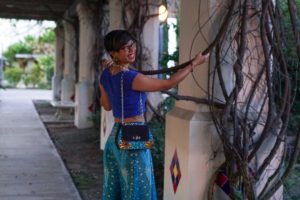
It’s building blocks. People get to see that something simple can be very creative and musical.
Imagine you go to a neighborhood favorite blues bar. You see someone in their 70s or 80s who came in with a cane, but as soon as they get on the dance floor it’s like they’re 20. They do something simple, like a step-touch, but they make it the smoothest step touch you’ve ever seen. They pause at the right time, and they just look so cool because they’re so chill and they own it and they don’t care about impressing you.
You’ll find your own swag. No one gets to dictate the style you choose. I’ll see old couples with the guy doing his basic and and then maybe his partner hears something in the music and starts doing her thing, and he just lets her out like, “I see you babe! Do your thing! I’m not gonna stop you!” I think that is one of the most beautiful things. You can own your own style and still come back and dance together.
That all happens once your rhythm is solid, your balance is solid, your posture is solid. That’s basically my teaching philosophy.
Q: What do people get wrong about blues?
Elizabeth: The importance of culture. You don’t have to be a historian, but you don’t get to say what does and doesn’t matter in the culture. You don’t even necessarily have to like blues. It’s totally cool not to like something, but still acknowledge that it has its own history. That’s a really big one.
The other thing, and this comes out of the dance scene, where way back, people kind of wanted to do groovy sexy dancing as sort a side room to swing dancing. Some people claim that as part of the history too. Well, it’s sort of part of revisionist ignorant history, but not really blues history!
I think that kind of dancing is totally legitimate, and there’s been a movement to call it freeform dancing or fusion dancing and I think that’s cool.
Do what you enjoy. But when a culture already exists, you don’t get to redefine it for them. At the same time, you don’t get to tell them what it is because it is also growing and evolving. It comes out of the community.
If you invest in the community, you became a part of the community. If you have actual friendships with musicians and you’re part of the scene outside of just classes and workshops, then you absolutely get to be a part of making that happen. But you cannot just come in and pick and choose what you like and don’t like and redefine what it means. Both musically and dancewise.
Other times, it’s just ignorance. Ignorance isn’t a bad word. When people are still learning, they’ll hear the elements of blues but not understand what is and what isn’t. It’s fuzzy.
There’s a lot of things that came out of blues, like rock and soul. Then there’s adjacent genres, like gospel blues, soul blues, funk blues, latin blues. It’s hard for people.
Ignorance is okay. People need to be able to ask questions to learn. I don’t fault people for not knowing. It’s just keeping that openness to learning…and to being wrong.
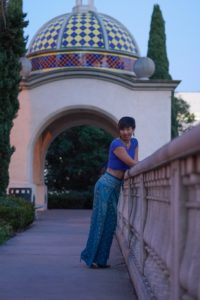
Q: Anything you’d like to add?
Elizabeth: Go out dancing to live music! That’s my biggest thing. I’d like to encourage students who go to studios to also go out to socials and live music. Learning stuff is cool, being able to put it into practice is cooler!
There’s just so much rich live music. It’s got most everything you could want. Why not take advantage when we have so much of it here?
Elizabeth Kilrain is a blues dancing instructor at A Time To Dance in San Diego, CA. Follow her instagram account @bluenotesd for more content on blues history and blues in San Diego.
Heather Hallahan
Latest posts by Heather Hallahan (see all)
- Q&A with Kevin Qin: An Engineer’s Journey To Finding Purpose In Teaching Salsa - Thu, January 30, 2020
- Q&A With Ruana Vasquez: Valuing Women In Brazilian Zouk - Sat, December 14, 2019
- Q&A With Elizabeth Kilrain: Who Gets To Say What Blues Is? - Mon, November 25, 2019

